#yoga philosophy
Text
A Short Introduction to the Yoga Sutras

The Yoga Sutras are generally considered a foundational text of the yoga tradition. In this article we examine the context and background of the text, briefly explore its structure and content, and I also offer some reflections on the text’s relevance in modern times.
Note: I have decided not to use diacritics in this article. Diacritics are those little lines and dots above and below letters that tell you how to pronounce Sanskrit words. Normally I use diacritics in my writing, as they are essential for pronouncing Sanskrit correctly. However as this article is meant for non-scholars I have decided it would be better to try and write the Sanskrit words in a way that will make them easy to read and pronounce, so as not to put anybody off!
History & Context
Most scholars these days date the Yoga Sutras to somewhere between the 2nd and 5th centuries CE, with Philipp Maas placing it in the early 5th century.
The text is attributed to a sage named Patanjali. Biographically, we know next to nothing about Patanjali. The name is a compound word formed from the Sanskrit words pata (falling, flying) and anjali (the gesture of joining the hands together in reverence).
Yoga had already been around in some form or another for many centuries by this point. Therefore, Patanjali did not ‘invent’ Yoga. Nevertheless, this is the earliest comprehensive and systematic text on the subject that has survived.
Yoga was just one darshana or school out of many in ancient India. In terms of philosophy, it shares many similarities with the Samkhya school. But whereas Samkhya tends to emphasise the use of reason and knowledge to gain liberation, Yoga emphasises practical and experiential methods.
Philosophically, both the Samkhya and Yoga schools teach a form of dualism. This is a dualism between purusha (our true Self) and prakriti (everything else, including the body and mind) and the whole point of Samkhya and Yoga in a nutshell is to guide us towards the realisation of purusha, that is, our true Self. This is true liberation or moksha in Yoga.
Most of the ancient darshanas had their own sutra text. Sutra texts are known for their brevity. Basically, sutra texts are where the most essential teachings of a school are distilled into as few words as possible. Knowledge systems were handed down orally in ancient India and thus source material was kept minimal with a view to facilitating memorisation.
Other authors would then come along and write longer commentaries on these sutra texts. The Yoga Sutras have a rich commentarial tradition spanning many centuries. The first and most well known is the bhasya commentary by a certain Vyasa. Vyasa actually means something like ‘compiler’ or ‘editor’ so that probably wasn’t his actual name!
Some scholars even argue that Patanjali and Vyasa are actually one and the same person, though others would strongly disagree with this thesis. Either way, this commentary is indispensable when it comes to making sense of the sutras, and published versions of the Yoga Sutras tend to include the bhasya commentary or at least reference it.
As a final note, many scholars now use the term pātañjalayogaśāstra to refer to this text as a whole (sutras plus commentary), because that is the name our oldest existing manuscripts use. But to keep things simple we will continue to use the name Yoga Sutras!

Structure of the Text
The Yoga Sutras are divided into the following four padas or chapters:
Samadhi Pada: This is where Patanjali defines Yoga and then describes the nature and the means to samadhi, the goal of Yoga.
Sadhana Pada: Sadhana is the Sanskrit word for practice or discipline. Here the author outlines two forms of Yoga, the kriya yoga (yoga of action) and the ashtanga yoga (the yoga of eight auxiliaries or limbs). This is also where Patanjali discusses the kleshas, five ‘afflictions’ or impediments to Yoga.
Vibhuti Pada: Vibhuti is the Sanskrit word for power or manifestation. Supra-normal powers (siddhis) are said to be acquired by the practice of Yoga. However, the temptation of these powers should be avoided and the attention should ultimately be fixed only on liberation.
Kaivalya Pada: Kaivalya literally means isolation. This is the chapter on final liberation. The Kaivalya Pada describes the process of liberation, it explains how the mind is constructed and veils the inner light of the Self.
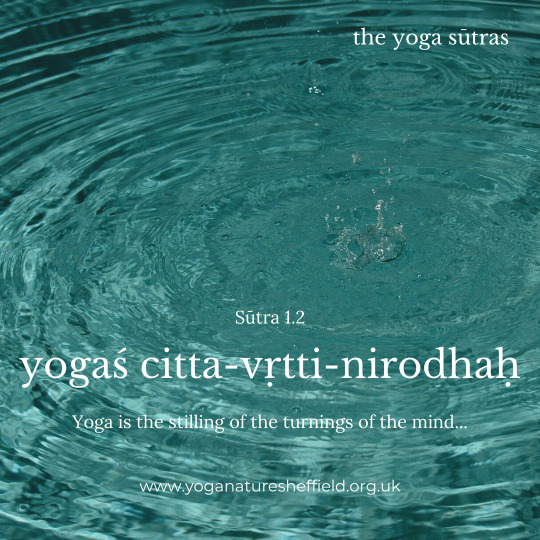
The Goal of Yoga
Not one for a lengthy preamble, Patanjali gets stuck right in there and clearly states the goal of Yoga in the well-known second sutra:
yogas chitta-vritti-nirodhah YS 1.2
Any Sanskrit sentence allows for a number of possible translations and this one is no different. A nice and accurate one is this one from Barbara Stoler Miller:
Yoga is the cessation of the turnings of thought
The reason I say this one is accurate is because a literal meaning of vritti is ‘turning’. Ever felt that thoughts are ‘going round and round’ in your head? Well this phrase nicely captures that! The vrittis in this statement refer to thoughts, emotions, ideas and basically any cognitive act of the mind. Patanjali lists five types of vrittis. These are, once translated:
Right knowledge
Error or false knowledge
Imagination
Sleep &
Memory
All such activities of the mind are products of prakriti and are completely distinct from the true Self, purusha, that pure awareness or consciousness which we are aiming to enter into through Yoga. The means prescribed by Patanjali in the first chapter of the Yoga Sutras to still the vritti states of mind are sustained practice (abhyasa) and dispassion (vairagya).
Specifically the practice offered is meditation, or keeping the mind fixed on any particular object of choice without distraction. Patanjali then describes a number of possible forms such meditation could take. By stilling all thought, meditation removes all objects of awareness. Awareness can therefore now be aware only of itself, of its own source, the true Self or purusha. This state is known as samadhi in Yoga and Patanjali makes it super clear that this state of samadhi is the goal of Yoga and thus the whole text is focused upon achievement of that goal.

Obstacles to Yoga
Patanjali mentions five kleshas, which can be translated as impediments or obstacles to achieving samadhi and thus Yoga. These five are as follows:
Ignorance
Ego
Desire
Aversion
Clinging
In the Yoga Sutras, and indeed in ancient Indian philosophy in general, the first item in any list is the most important and fundamental. It’s the same here. Ignorance here means failing to recognise our true Self or purusha and instead identifying ourselves with our body, mind and the material world. All of the other obstacles arise from this fundamental error.
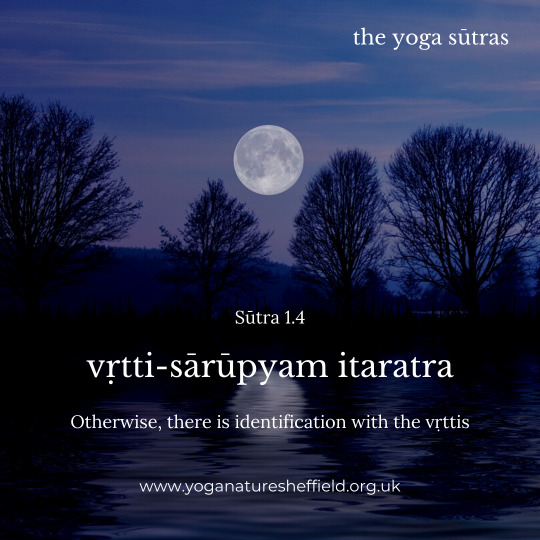
Yoga Psychology
Like most other schools of Indian thought, the Yoga school believed in the related concepts of karma and rebirth. According to this doctrine, we are caught in an endless cycle of rebirths called samsara and the purpose of following a path such as Jainism, Buddhism or Yoga is to bring an end to this cycle. Where the Yoga Sutras really shine are in interpreting this doctrine in a highly sophisticated ‘psychological’ way, to use modern terminology.
According to this Yoga psychology, the mind forms an impression of an object through the sense organs, which is called a pratyaya. Once this pratyaya or active image of this object is no longer of active interest to the mind, it becomes an inactive or latent samskara. A samskara is an imprint left in the chitta, somewhat like a sound is imprinted on a tape recorder, or an image on photographic film. In this way the vrittis, the activities of the mind, are retained as samskaras when they fade.
It is important to note that these samskaras are not just passive imprints but vibrant latent impulses that can get activated under conducive circumstances and can exert influence on a person’s thoughts and behaviours, even many years after the impression was made. What’s more, according to Yoga these samskaras can persist from previous lives. The chitta is thus something of a storehouse of these recorded samskaras, deposited and accumulated there over countless lifetimes. One is here reminded of the theory of the subconscious in modern psychoanalysis.
According to Yoga, karma is generated by the vrittis, and the vrittis, in turn, are produced by the kleshas. There is thus a vicious cycle of kleshas, vrittis and samskaras. To run through the whole cycle again to try and make it as clear as possible: vrittis are recorded in the chitta as samskaras, and these samskaras eventually activate consciously or subliminally, producing further vrittis. These vrittis then provoke actions and reactions, which in turn are recorded as samskaras, and the cycle continues endlessly, leading to much suffering along the way.
The whole Yoga project aims to bring this vicious cycle to an end and it is liberation from this mind created suffering that we are after as yogis. The Yoga Sutras are effectively a manual guiding us towards this end, this state of samadhi or complete meditative consciousness.
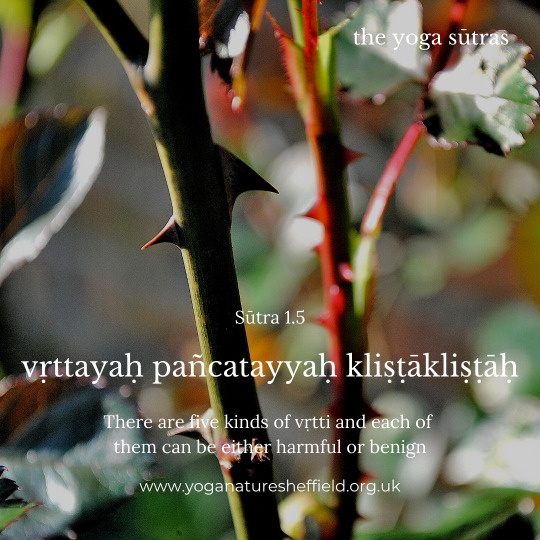
The Yamas and Niyamas
The second pada or chapter of the Yoga Sutras contains a famous exposition of five ethical restraints (yamas) and five ethical observances (niyamas) and these are relatively well-known in the modern yoga world. The first thing to get clear is that these yamas and niyamas are NOT original or unique to Yoga. All ascetic schools in ancient India had these ethical codes, and the exact same ones appear in Jainism for example. Sometimes, you even get more of them. Some yoga texts for instance list 10 yamas and 10 niyamas.
The five yamas listed in the Yoga Sutras are:
Ahimsa (non-harming)
Satya (truth telling)
Asteya (non-stealing)
Brahmacharya (chastity or celibacy)
Aparigraha (non-acquisitiveness)
The five niyamas are:
Shauca (purity or cleanliness)
Santosha (contentment)
Tapas (self-discipline)
Svadhyaya (study)
Ishvarapranidhana (devotion to the Ishvara or Lord)
Many of these could do with further explanation and commentary but there is not space in this present article. The other thing I want to stress is that these yamas and niyamas were not seen as optional extras for yogis. Rather, these were the bedrock of fruitful yoga practice. Patanjali and others refer to them as the mahavratam or ‘great vow’. Importantly, having listed the yamas, Patanjali devotes an entire sutra to reiterating just how central and non-negotiable these yamas are. Once translated, this sutra reads as follows:
[These yamas] are considered the great vow. They are not exempted by one’s class, place, time or circumstance. They are universal. YS 2.31
So, regardless of your social status, regardless of where you live, in which time period you live, and any other extenuating circumstances (such as your career), adherence to the yamas, including especially ahimsa, the foundation of them all, is an essential part of being a yogi as defined by Patanjali’s system.
Vyasa is even more emphatic in his bhasya commentary to the Yoga Sutras, and it is here that the link between ahimsa and vegetarianism is explicitly and unequivocally made, and several examples are brought to bear. Refer to the work of scholar Jonathan Dickstein to read more about the strong case for vegetarianism made in Patanjali Yoga.
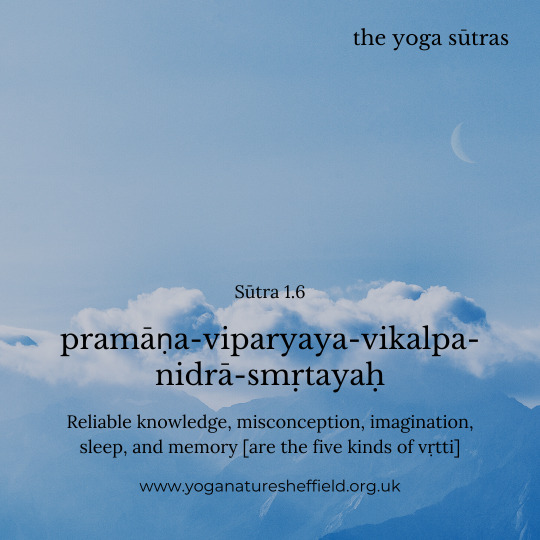
The Ashtanga Yoga
These yamas and niyamas are just the first two parts of Patanjali’s famous ashtanga or eight-part path. I would first like to clarify that this systematisation of yoga into a series of angas (a word translated by some modern scholars as ‘auxiliaries’ but more commonly rendered as ‘limbs’) was again not novel to Patanjali. Throughout the yoga tradition we find various similar schemes, predating and postdating Patanjali, including fourfold, fivefold, sevenfold and even fifteenfold schemes. I would also like to stress that, despite sharing the same name, this ashtanga yoga bears little relation to the modern postural form of yoga known as Ashtanga.
Following the yamas and niyamas then, we then have the following six angas:
Asana (posture): At last I hear you cry, postures! In Patanjali’s day meaning a steady and comfortable seated posture, asanas today comprise a set of physical exercises which stretch and strengthen the body. It is this aspect of yoga that has been most visibly exported to the West but too often stripped from its context as just one ingredient in a more ambitious and far-reaching sequence.
Pranayama (breath control): Prana refers to the universal life force whilst ayama means to regulate or control, but it can also mean to expand and lengthen. Prana is the vital energy needed by our physical and subtle layers, without which the body would perish. It is what keeps us alive. Pranayama is thus the control or expansion of prana through the breath, depending on which definition of ayama you use.
Pratyahara (withdrawal of the senses): This limb further deepens the above process by removing consciousness from all engagement with the senses (sight, sound, taste, smell and touch) and sense objects.
This is followed by the final three limbs collectively known as samyama: Dharana (concentration, fixation), Dhyana (meditation), and finally Samadhi (the latter of which Patanjali further divides into seven rather esoteric stages). These last three limbs are essentially different degrees of concentrative intensity and culminate in the realisation by the Self of its own nature.
Just to reiterate one more time, it is this Self-realisation, the state known as samadhi, that is the true goal of Yoga.
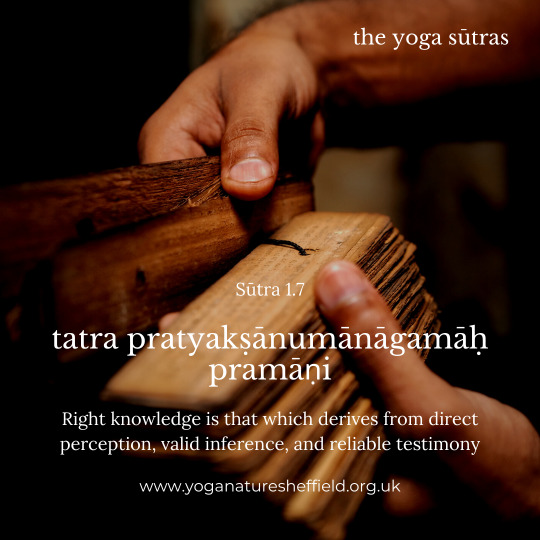
Relevance of the Yoga Sutras for Today
In this brief introduction we have of course only scratched the surface of this incredible text, and there is much more that could be said. But for now I want to end with some concluding reflections on the continuing relevance of the Yoga Sutras in the modern world.
One question that arises is whether Patanjali was prescribing a strictly ascetic path. And indeed, the general scholarly consensus has usually been to associate Patanjali's Yoga exclusively with extreme asceticism, mortification, denial and renunciation. However, there are dissenting vocies. For example, Ian Whicher has repeatedly and passionately argued that Patanjali's Yoga can be seen as enabling a more responsible living in and engagement with the world, and that Patanjali was not advocating total renunciation. For Whicher, following the path of Patanjali can lead one towards that integrated and embodied state of liberated selfhood whilst living, a state known as jivanmukti.
Regardless of whether Patanjali was historically preaching ascetism or not, the fact remains that the Yoga Sutras are full of valuable ideals and tools for the practitioner living in the modern world. Let’s face it though, this is a challenging path. As a scholar and practitioner I often perceive a huge disconnect between the kind of yoga I am seeing on the likes of Instagram and the teachings of the Yoga school as presented in the Yoga Sutras. After, all, the former is highly focused on body image, whereas the Yoga of Patanjali is all about dissociating ourselves from our body and mind and recognising our true Self. However, this does not mean that the two are necessarily irreconcilable.
Though there is absolutely no historical evidence that Patanjali and his followers were practicing postural yoga (that didn’t come until later with the emergence of the Hatha tradition) nowhere in the Yoga Sutras does it say that physical exercise cannot be part of one’s yoga practice. We just have to remember that as far as Patanjalian Yoga is concerned, such postural activity is just a further means or method on the path towards samadhi or full meditative awareness. This is why any so-called yoga that does not contain more internalised meditational practices but which focuses solely on physical exercise should not really be called yoga.
The Yoga Sutras remains undoubtedly the most famous ancient yoga text, and it is studied to some extent in probably every yoga teacher training course. To be honest, I personally feel that too much emphasis is placed on the Yoga Sutras, at the expense of other branches and other texts of the tradition. The Tantric texts, in particular, are still sorely neglected. One of my own aims in my work is to try and decentre the Yoga Sutras and provide a much wider overview of the history and philosophy of yoga and the other related schools of ancient India. This is not to take anything away from the Yoga Sutras, however, as it is without doubt an extraordinary text that continues to be highly relevant in the 21st century.
Further Reading
I have already mentioned some scholars whose work you may wish to refer to, such as Philipp André Maas, Ian Whicher and Barbara Stoler Miller. For a translation and commentary on the Yoga Sutras that is both scholarly accurate and reasonably accessible I would recommend that of Edwin Bryant published by North Point Press.
7 notes
·
View notes
Text
Transform Yourself Into An Inspiring Leader Through The Power Of Yoga - Let’s Begin The Journey Together!
Yoga Training to become a yoga teacher is a holistic journey that explores the deep wisdom of yoga and leads you on a path of spiritual and personal development. Our courses are designed to empower you as a skilled yoga practitioner and a confident and compassionate teacher. We prioritize individual growth and provide a supportive environment for your journey.
Join us for an unforgettable and life-changing experience at Om Shanti Om Yoga Ashram. Sign up for our yoga teacher training
2 notes
·
View notes
Text
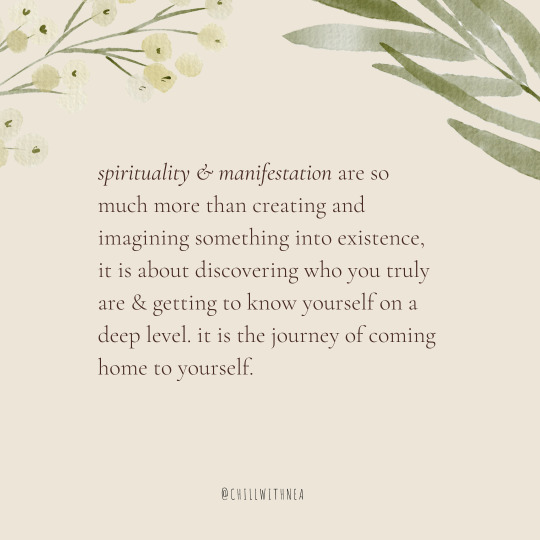
I think the most ppl on this journey reach this stage of "advanced spirituality/manifestation" after discovering and playing with the teachings for a while. Sure, it's cool to create things and I encourage you to continue to do so, but it's so much more fulfilling to get to know yourself on a deep level, to cultivate and develop a healthy relationship with yourself, both your human and your spirit/soul/higher self/god/consciousness/universe (you name it). After all, in both journeys, my recovery from an eating disorder and my spiritual one, I was led to coming home to myself. Which to me means, being at peace with my body, embracing my humanness (incl. being weird, silly and cringey af sometimes) and trust my path - knowing that my soul already came into this lifetime with a plan, a blueprint where I don't have to control, push or force anything but rather allow, being open and naturally moved (to be, do and create).
I think, I want to record an episode for my podcast on this topic. If you have any questions or something related to this to touch on, feel free to send me a message or comment below.
#ig: @gardenofnea / @gimmeabreak.podcast#nea's posts#manifestation#self love#spiritual teachings#spiritual awakening#yoga philosophy#true self#authenticity#selbstliebestärken#radical self love#conscious creation#podcaster#ed recovery#ed warrior#mental health blog#mentale gesundheit#prana#life force#personal development#loa
8 notes
·
View notes
Text
Book Of The Day - Yoga by the Numbers
Book Of The Day – Yoga by the Numbers
Today’s Book of the Day is Yoga by the Numbers, written by Richard Rosen and published in 2022 by Shambhala Publications.
Richard Rosen is an American Yoga teacher, with more than 35 years of experience. He began his journey into yoga in 1980 following the training program of the Iyengar Yoga Institute of San Francisco and since 1987 he has been teaching and writing books and articles about…
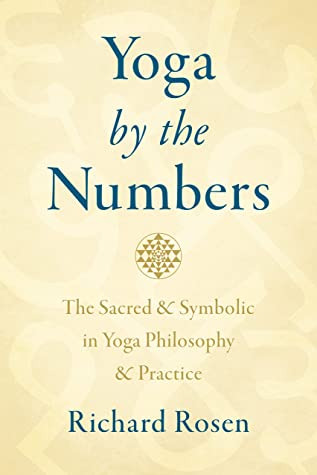
View On WordPress
#Book#Book Of The Day#book recommendation#book review#Numbers#Philosophy#Raffaello Palandri#Raffaello Palandri Yoga Teacher#Richard Rosen#Sacred#Shambhala#Shambhala Publications#Symbolic#Symbols#Yoga#Yoga by the Numbers#Yoga philosophy#Yoga practice#Yoga Teacher
8 notes
·
View notes
Text
Ragdoll Pose, also known as Dangling Pose or Baddha Hasta Uttanasana, stretches the spine, hamstrings, and calves while strengthens the stomach, diaphragm, liver, kidneys, intestines, feet, and thighs.
🔸 🔸 🔸 🔸 🔸 🔸 🔸 🔸 🔸 🔸
🧘♂️ Information:👉
1️⃣ Known as:👉 Ragdoll Pose, Uttanasana Variation Hands to Elbows, Baddha Hasta Uttanasana, Standing Forward Fold Pose Variation Hands to Elbows, Dangling Pose, Yin Yoga Dangling Pose
2️⃣ Sanskrit name:👉 बद्ध हस्त उत्तानासन
3️⃣ IAST:👉 baddha hāsta uttānāsana
4️⃣ Pronunciation:👉 BAH-dah hah-stah OOT-tan-AHS-anna
5️⃣ Type:👉 Forward-bend, inversion, stretching, standing poses
6️⃣ Level:👉 Beginner
7️⃣ Focus:👉 Hamstrings, calves, knees, neck
8️⃣ Total time:👉 30 to 90 seconds
9️⃣ Drishti:👉 Third Eye (Bhrumadhye)
🔟 Chakra:👉 Sahasrara Chakra, Ajna Chakra, Swadisthana Chakra, Muladhara Chakra
💡 Indications:👉 Lower back, spine, sinuses, neck pain, digestion, urinary bladder, liver, spleen, kidneys, balance the doshas (Pitta and Kapha), headaches, mild depression, stress, insomnia
💡 Counterpose:👉 Mountain Pose (Tadasana), Child’s Pose (Balasana), Savasana (Corpse Pose)
💡 Preparatory poses:👉 Downward-facing dog pose (Adho mukha shvanasana), Upward/half forward fold pose (Ardha uttanasana), Head-to-knee pose (Janu sirsasana), Seated forward bend pose (Paschimottanasana), Reclined hand to toe pose (Supta padangusthasana)
💡 Follow-up poses:👉 Upavistha Konasana (Wide-angle seated forward bend pose), Ardha uttanasana (Standing half forward bend pose), Paschimottanasana (Intense dorsal stretch pose)
💡 Contraindications:👉 Back or neck injury, pregnant women
🔸 🔸 🔸 🔸 🔸 🔸 🔸 🔸 🔸 🔸
#yogateacher#yogadaily#yogaeveryday#fit#workout#yoga poses#Fitzabout#Fitabouts#hatha yoga#yoga philosophy#yoga#yogalife#yogapose#yogapractice#yogagirl#Ragdoll Pose#Baddha Hasta Uttanasana#Dangling pose
4 notes
·
View notes
Text
The twenty-years path
My life was never about myself, nor it was for myself.
I have been given the meat of this body for someone else.
That’s what I realised when I was merely 10 years old, and my idea about life has not changed ever since, only the reasons have.
It was a simple beginning. My mother was constantly angry at my small mistakes, rather than happy about other things I did.
I do not even remember seeing her smile around that time of my life, there was absolutely no way out there to make her happy,
I found myself unworthy, and decided death was the way.
Although later, I also found that death wasn’t also easy. I contemplated - and thought, I cannot live to entertain myself or my loved one (then, mother), I was probably born to devote my life to someone who is on the verge of dying.
Then, myself at 10 years old, thought of the idea that one day, when I see someone getting hit by a car, I will jump into the car road and get hit die for them instead. That is my role, that is the purpose of my life.
That was decades ago, my reasons sound pessimistic. However, what I induced from my circumstances then wasn’t that wrong, considering what I may induce from all the other philosophical thinkings I learnt later in my life.
In my 20s, I dedicated all my times to work. I felt like I, as one individual was not capable of doing so much good to the society all by oneself, I could not change the world, my influence would be so little on the society and on the world if I spoke out, if I screamed.
Although I knew, companies and businesses analysed the market’s needs, and are established based on the needs and demands, delivering what is most needed at a time to the market, thus, automatically do good as they operate.
I was addicted to work, one paper I complete, one email I sent, contributed to something. To the office, to the client, further, to the audience that the client served, and I might have contributed to the economy as a result.
Later in my 20s, I began to feel - that I am losing balance of my own.
I was standing on the shaky ground, I felt like my feet were above the rocks, and I did not have the right to stretch my arm out to support anybody who is falling, or is in need of support. Because - if I support them with my hands and if I collapse before, what would happen? Wouldn’t that harm them more than they should have been harmed without me?
That’s when I realised - I needed to take care of myself before anything.
I was not physically very healthy to begin with. I was constantly sick and I was fine with it, as long as it only bothered me.
But I realised that would limit my capability of giving and devoting to others, I saw the need to fix myself. I needed to pay at least minimum necessary cares for myself. In order to maximise my ability to make someone else happy.
Clearly, taking care of myself, a.k.a. self-maintenance was not my purpose, it was only one of the process of achieving what I always tried to achieve. The goal was always to sacrifice myself to others, for the betterment of the society and the world as a whole.
I decided to eat better, sleep better, and opted out from doing things that may disturb me so I can keep myself mentally content rather than feeling always challenged.
It took me over 20 years to realise this, and during this whole time, my reasons have changed, but my aim never has.
I currently study Yoga philosophy, and according to its philosophy, I feel some parts of it are largely similar to my way of thinking. However, I still feel somewhat odds about what I do and how I think.
And next... I will be reasoning and writing about this next evolution of myself and my reaction to the current, modern society.
わたしは幼い頃に「わたしは自分のために生きている」と言う感覚を捨てた。
この肉体は誰かに捧げるためにある
と気がついたのは10歳の時だった。そしてそこに紐づく主張は変わっても、根本となる正義は今でも変わらない。少しの違和感をこの20年以上の時間をかけて、わたしは哲学的に説いてきたと思う。
始まりは単純なことだった。
わたしの母はその頃、わたしがする少しの間違いに怒って、頑張ったことは褒めてくれず、彼女はわたしがいることで迷惑しているようで、わたしは結局どうしたら彼女を笑顔にできるのか、わからなくなってしまった。
愛する人にとって迷惑にしかなっていないこと。わたしがいることで彼女笑顔を奪い取っていること、わたしは自分の人生の価値を見失い、人生を辞めることが正なのではないかと考えた。
しかし生死は簡単なものではなかった。幼いわたしにとって、簡単に生を選ぶことも死を実行することも自分でコントロールできる何かではなかった。そう思った時
わたしはこの肉体を、誰かのために死ぬために与えられたのではないか
と考えるようになった。
幼くて経験のないわたしには、多くのことは思いつかなかった。
誰かが将来車に轢かれそうになった時、わたしは道路に代わりに飛び込んでその人を生き延びさせられるかもしれない。それだけでもこの無駄な肉体は存在する価値があるのではないか、そう自分を説得した。
当時の考えは悲観的で、否定的な手口で始まったものに聞こえるかもしれない。だけど今でも根本的なわたしの正義は変わっていない。
「わたしの命は誰かに捧げるためにある」
昔ほど切羽詰まっていないし、今は前向きにそう考えているけれど。
20代の頃は仕事だけに盲目に取り組んだ。
若い体はいくらでも動いてくれて、寝ないで20時間近く働いても苦でもなかった。自分の正義を実行していることはわたしの心を満たしてくれた。
当時のわたしは、会社や事業というものは人々の需要を読み取り、その需要に合わせて供給するために政府や組織が見極めて設立されているもの。わたし一人の声では世界は変えられないが、会社や組織を通してだったら少しでも社会貢献ができるはずだ という考えをもとに
とにかく会社に属することに執着して、少しでも多くの仕事をこなそうと
わたしに能力があるならばどこまでも誰かのために尽くそうと、体と心を全部尽くしていた。
そして20代後半になり、気づき始めた。
土台が安定していないわたしが差し伸べられる手はない
元から体調が安定しなかったわたしが、無理をして体を酷使して働いたり尽くしたりして、自分のケアを怠り続けることでわたしが倒れて、わたしを信じてくれる人を道連れにして倒れてしまうこと。
誰も信じてついてきてくれていなかったとしても
わたしの足元が安定していないのに、わたしは誰かに手を差し伸べるべきではないということに気がついた。
その時、初めて自分に尽くすということを考えた。
もちろん、わたしのために何かをするということではない。わたしをケアするということは過程にすぎず、誰かに全力で奉仕する目的のために、わたしは自分に与える必要があるのだと。
わたしは自分に食事を与えるために時間をとり
必要最小限以上に寝て
したくないことはさせず
それによって精神状態の波を消して
自分が自信を持って手をひける状態に自分を作り出すことにした。
ここまで考えるのには自分の体を観察して、20年もの時間がかかったと思う。
わたしが今までの人生でどれだけ奉仕ができたのかはわからない。
だけど、わたしの正義は一度も変わったことがなかった。
自分のために捧げる人生ではない。
わたしはこの肉体を与えられて、この肉体の恩恵を使って誰かにそれを捧げるためにここにいる。理由は20年間変わり続けた。だけど、わたしは今まで何をしてきても、今後何をしてきても、常に誰かのために何かをしていることに変わりはない。
最近ヨガ哲学を学ぶ上で、わたしの考えは非常に「幸せ」に近い考え方だと感じることがある。
しかしそこにもまた違和感がある。
その違和感が何なのか、次は紐解いていこうと思う。
#legal philosophy#yoga philosophy#yoga#moksha#dharma#law student#philosophy#法哲学#Jurisprudence#ヨガ哲学#ヨガ#ヨガインストラクター
5 notes
·
View notes
Text
Hello everyone,
I am changing my life by making it more intentional.
In this profile, I will create an order to the chaos that is called my mind. I am 27 years old, and I am annoyed by the edges and corners that it always gets sidetracked in. The fluctuations of the mind. I do not accept being triggered into old habits and thought patterns that don´t serve me anymore.
My path is normally clear to me. I know what makes me happy and what makes me flourish. I know the habits that will lead me to achieving this life that makes me strive and allows me to have the impact on this world that I am intended to have. And I know the habits that should have red blinking alarms on them which for whatever reason seem extremely attractive to me from time to time.
Hopefully, you have read the slight irony in this post. I am not perfect. I make mistakes. And here, I will not document a utopia, a fairytale, a life unlived. I will document my life and the ideas, people and philosophies that inspired me. Always providing sources of course.
Maybe no one ever reads this.
Might be for the better.
Or someone reads this and has found a form of entertainment. Or does not understand anything. Or finally finds their thoughts put on paper (print).
And maybe, we can even build a community of head chaos people that are creating focus through writing.
1 note
·
View note
Text

Padma पद्म 🪷 meaning lotus.
Like a lotus, we too have the ability to rise from the mud, bloom out of the darkness, and radiate into the world.
1 note
·
View note
Text
“The greatest ornament of yogi is forgiveness. Sun cannot be seperated from sunshine, flame cannot be seperated from heat and light. Similarly forgiveness cannot be seperated from a true yogi.”��
www.nirvanayogaschoolindia.com
0 notes
Text
The Siddhis | The Powers | Yoga Sutra's
Some thoughts on the Yoga Sutra’s | A Podcast
Guide to Spiritual Enlightenment, Meditation and Self-Discipline
“Nowhere on earth has the impulse toward transcendence found more consistent and creative expression than on the Indian subcontinent.”
Georg Feuerstein
Patanjali is an early scholar in the science of understanding the mind, and his compilation of the Yoga Sutras is considered a…
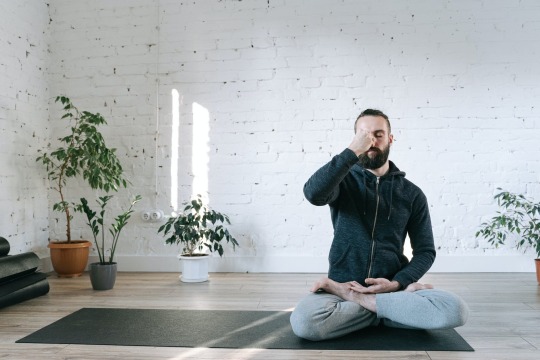
View On WordPress
#ancient wisdom#Awakening#Consciousness Exploration#Eastern Philosophy#Mental well-being#Mind Science#Patanjali#Self-realization#Yoga Philosophy#Yoga Practices#Yoga Sutras
0 notes
Text










https://www.teepublic.com/user/helengie
#black friday#black friday sale#helengie#christmas sale#for sale#classic tshirt#yogainspiration#how to meditate#meditate#meditating#chanting#self awakening#awaking#spiritual awareness#yogini#yoga philosophy#meditation#listen to your soul#listen to yourself#listen to your heart#mandalas#tshirts#tshirt#solar plexus chakra
0 notes
Text
The Tantrik Five (or Six) Layered Self

One perennial question that humans have grappled with since the dawn of consciousness is "Who or What am I?" Or, more precisely, "What reality lies behind the 'me' thought?"
Over one thousand years ago, a sophisticated school of Tantrik philosophy (called the Pratyabhijñā or Recognition school) developed a philosophy that the self actually has five (or sometimes six) 'layers' going from the grossest to the most subtle. We may picture this layered self like a Russian doll, except for the crucial fact that each layer is not rigidly separated but rather is permeated by those interior to it. Have a look at the following diagram:

Image source: Christopher Hareesh Wallis
In this model, all suffering is said to derive from over-identification with one or more of these layers of the self. In other words, the cause of all suffering is not experiencing yourself as you really are. Let us now take a look at these layers one by one.
Vastu: The Stuff Layer
In some versions of this model, a sixth outer layer is added before we even get to our physical body, and this is the layer of vastu or the stuff that surrounds us. This is very insightful, and is perhaps even more relevant now then it was back then, as most of us are surrounded by a great many possessions and belongings. Could it be that this physical ‘clutter’ that surrounds us inhibits us from going deeper into our self and finding peace? Certainly, recent trends such as downsizing and decluttering seem to support this. As well as physical possessions, this layers includes all the labels, roles and multiple responsibilities that occupy our lives. We believe that over-attachment to this most outer, superficial layer is very common today. What do you think?

Image generated by AI
Deha: The Body Layer
Our identification with the physical body is expressed in many thoughts and statements like: “I am fat”, “I am thin”, “I am young”, “I am old”, “I am pretty”, “I am ugly”, “I am fit” or “I am out of shape”. Thoughts and statements such as these indicate a belief that our identity is defined by our physicality. If we are identified with the body to the exclusion of the deeper layers of our being then we will necessarily base our self-worth on our own and others opinions of our body. In this case we are definitely setting ourselves up for suffering, for the one universal truth of the body is that it will break down, age, decay and die.
Chitta: The Heart Mind Layer
In yogic philosophy both thoughts and feelings are both viewed as fluctuations or vibrations of the mind (they are called vrittis in Sanskrit) and over-identification with this layer is without doubt the most common misidentification of all. We do it all the time!
The mind creates oversimplified, overgeneralised, and distorted representations of reality. When we take these mental constructs as reality instead of the distorted representations that they are, we suffer. When we are identified with our mind to the exclusion of the other layers of our being we suffer. For the mind changes even more rapidly than the body does, a kaleidoscopic shifting display of imagery, words, ideas and feelings.
We express our identification with this layer with thoughts or statement like: “I am smart”, “I am dumb”, “I am competent”, “I am incompetent”, “I am happy” and “I am sad”.
The most amazing relief and sense of freedom come when we no longer see our identity and reality as defined by our thoughts and feelings. When we are not overly identified with the mind, we ride the flow of its energy learning its flux. We are merely amused by its foibles and petty fears and draw power from its intense feelings whether positive or negative. Free of mind identification we do not take ourselves too seriously. We certainly do not believe everything we think. We understand that the mind is just one of many sources of input.

Image: View of a kaleidoscope, from Wikipedia
Prana: The Vital Energy Layer
At this layer individuality is transcended for we share this layer with all living beings. The movement of prana which is intimately connected with the breath is vital for life to continue.
Our identification with prana is expressed in such statements as: “I am energised”, “I am drained”, “I feel alive” or “I feel blah”. The amplification and depletion of prana, which is connected to diet, exercise, sleep and thought patterns, is responsible for our general energy level and many of our moods as well. If you find yourself cranky, irritable, or listless with no clear external reason for it, it is often due to the energy state of your prana and can thus be addressed through food, exercise, sleep, or relaxation.
Over identification with prana puts us at the mercy of our moods. Taking our moods too seriously can prompt impulsive action that our mind or body layer may later regret. Such as when you snap at a loved one because you are irritable due to simple hunger. We take prana-based moods too seriously when we believe that they are arising from the layer of the mind instead of simple prana depletion or amplification.
Shunya: The Layer of the Void
This is an interesting one. This penultimate layer in our analysis of the self is the empty void that one accesses in deep sleep and also in deep meditation. This can be a wonderful state to be in, and yet Tantrik philosophy claims it is problematic if we over identify with this layer.
Many meditators who have reached this place of the transcendent and profoundly peaceful void decide (upon emerging from it) that this is their real nature, declaring something like “I am not of this world; my true Self transcends all things.” Such people might end up renouncing all identification with the material world, body, and mind, becoming transcendentalists. They can attain deep states of peace but often cannot integrate these states into daily life, and thus may fail to adequately take care of their body and become unable to relate to others easily. This is not the Tantrik path, which requires the practitioner to continue to live, work and love in the world, not to transcend and escape from it!

Image: Void space by Maandersen
Cit or Saṃvit: The Core (Pure Awareness)
This is the layer that the conceptual, intellectual mind finds difficult to comprehend and yet the subtlest principles are the truest. It is the most difficult layer of ourselves to comprehend because it is the power by which all comprehension is done. It is the most difficult to perceive for it is the power behind all of perception.
This is the layer of our essential nature, the innermost self within the conditioned self. It is all embracing, present in all forms of consciousness, including even the more contracted forms of self-identification with any of the previous layers. This layer is beyond all other layers, it is neither the top nor bottom of the hierarchy, as it pervades and subsumes them, making awareness of them possible. Consciousness is the secret pulsating core of our whole existence. Mysterious because it is omnipresent and yet we do not notice it.
In other words, the deepest spiritual experience of reality consists of the full realisation that this divine consciousness is our true essence and that all the layers of our being that we are accustomed to identifying ourselves with (stuff, body, mind, prana, void) are in fact the ever-changing expressions of that core consciousness. To put it yet another way consciousness vibrates forth into manifestation as all the more peripheral layers of our being from the void outward. Those other layers are epiphenomena of the core consciousness not the other way around.
Identification with this layer takes the form of the experience (not merely the thought or statement) of being blissfully free self-aware Consciousness. When we are identified with this layer, we can experience any state as joyful not just the ones that are radically elevated from our ordinary experience. In other words, identification with our core awareness enables us to experience joy in all things because IT is the joy in all things. It is the perfect fusion of pure consciousness and all the forms of energy that it embraces.

In Summary
This Tantrik model of the self invites us to ask where the locus of our constructed identity lies, on what level do we habitually fixate our awareness. To sum up, the final limit of your progress on the path is determined by the view of reality (and selfhood) that you hold - for you naturally do not seek to go beyond whatever you consider to be the ultimate. Thus, all Tantrik practice in this tradition is aimed towards getting the practitioner to live continually in the light of pure awareness, in and from the core of their being.
Finally, how do these layers compare to the Koshas?
You will hear many yoga teachers talking about the koshas, sheathes or layers of the self. Strictly speaking, this model stems from the Upanishads and the Vedantic school of Indian philosophy and not the Yoga school. However it has now become an important part of yoga philosophy and thus a few words should be said about how this model compares with the Tantrik one described here.

Notice the following key differences:
There is no equivalent to the Vastu ‘stuff’ layer in this model.
The physical body layer is literally referred to as the ‘food sheath’ here.
This model puts the Pranic layer before the Mental layer. The other way around to the Tantrik model. We prefer the Tantrik model which places the vital energy of prana deeper then the mind, what do you think?
This Vedantic model separates the Mind layer into ordinary thought and emotions and higher wisdom and discernment (the Vignana layer). For the Tantrik model, no such distinction is made. Thoughts are thoughts, no matter how lofty they might appear!
There is no Shunya or void layer in this Vedantic model.
In this model there is a Bliss sheath that surrounds Atman, the core of our Being (represented here by the OM symbol). The implication here is that bliss is not part of our core Being but is yet another layer that surrounds it. This reflects the Vedantic notion that Atman is quite detached, inert and passive. This contrasts to the Tantrik view in which our true Self, our essence nature, is innately blissful, dynamic and engaged with the world.
There is not necessarily any right or wrong here, just two different ways of looking at things. Which model do you think is most accurate and/or helpful?
Note: This post couldn't have been created without the work of Tantrik scholar Hareesh Wallis whose work you can find at Hareesh.org to learn lots more about Tantrik philosophy.
#yoga philosophy#tantric philosophy#tantra#fivelayeredself#vastu#deha#chitta#prana#shunya#awareness#consciousness#nonduality
0 notes
Text



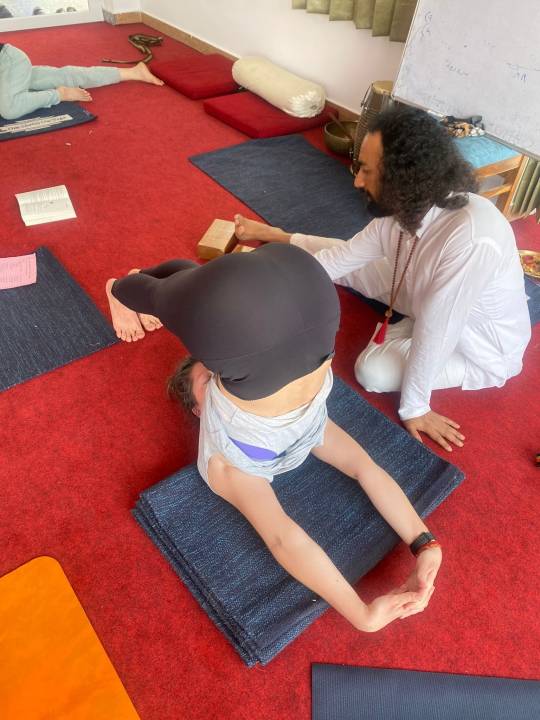

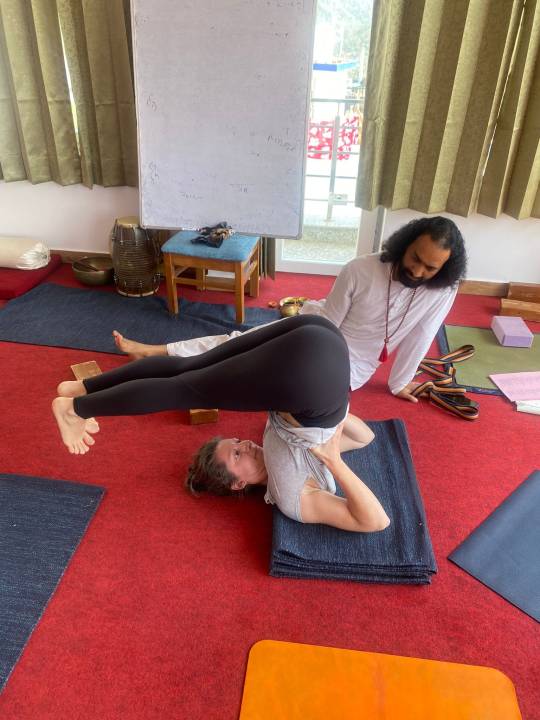
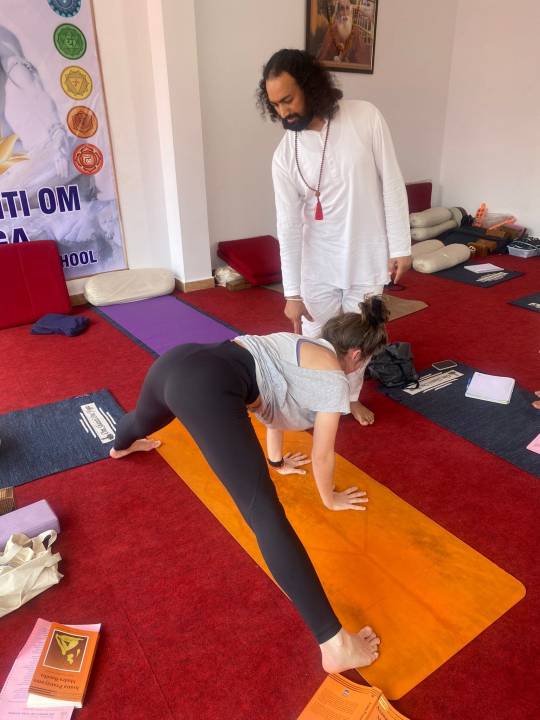

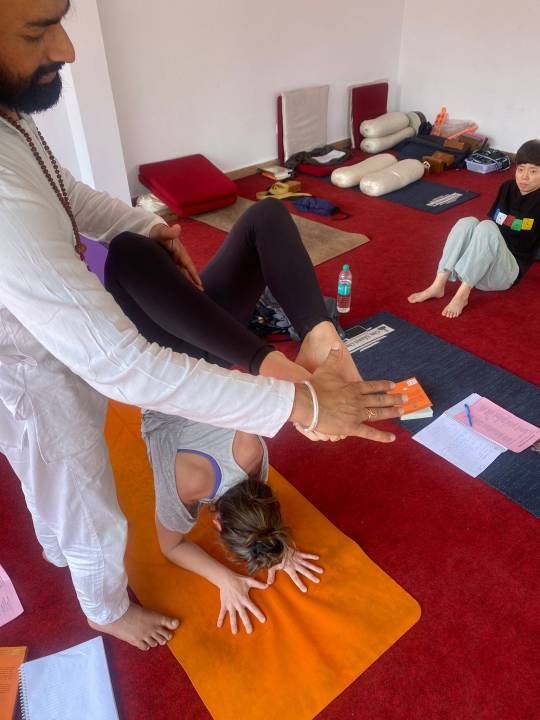

🌟 Finding Your Flow: The Power of Yoga Alignment 🌟
Yoga Alignment isn't just about striking the perfect pose - it's about tuning into your body, finding balance, and creating space for growth. By focusing on alignment, we can prevent injuries, deepen our practice, and cultivate a deeper connection between mind, body, and spirit. 💫
Join us for a journey of self-discovery and mindfulness on the stunning banks of the Ganges. Don’t miss out on these fun-filled moments. Join our upcoming YTTC now!
Upcoming Date:
🗓️ 01st Apr to 25th Apr 2024
🗓️ 05th May to 30th May 2024
🗓️ 02nd Jun to 27th Jun 2024
2 notes
·
View notes
Text
Part 3: Meet the Instructors and Dive Deep into Sivananda's Teachings
At the heart of the Sivananda Yoga TTC are the dedicated instructors who bring decades of experience, knowledge, and spiritual depth. They are not just teachers but mentors who guide you on this transformative journey.
Instructor Profiles: While each center has its own set of instructors, they all carry forward the lineage of Swami Sivananda and Swami Vishnudevananda. These instructors typically…

View On WordPress
0 notes
Text
Was That Considered Yoga?
A year or so ago I reacted to the frustration I feel at times for the yoga culture we have seemed to create in the western world. I opened my mouth in a fit of grievance and spoke truthfully about this publicly. Some heard it with curiosity and grace, while others were dismayed at my seemingly arrogant stance on this.
In our western yoga culture there seem to be so much focus on the physical…

View On WordPress
#Adaptive Yoga#aging#Alzheimer&039;s#Alzheimers#assisted liiving#brain#dementia#elderly#memory loss#true yoga#Yoga#yoga philosophy#yoga teacher
0 notes
Text
Eka Pada Utkatasana, also known as Half Chair Pose or Ardha Utkatasana, stretches the hamstrings, quadriceps and gluteus muscles while strengthens the legs core, ankles and foot.
🔸 🔸 🔸 🔸 🔸 🔸 🔸 🔸 🔸 🔸
🧘♂️ Information:👉
1️⃣ Known as:👉 Eka Pada Utkatasana, Half Chair Pose, One Legged Chair Pose, Ardha Utkatasana, Standing Pigeon Pose, Whooping Crane Pose, Standing Figure Four Pose
2️⃣ Sanskrit name:👉 एक पाद उत्कटासन
3️⃣ IAST:👉 Eka Pāda Utkaṭāsana
4️⃣ Pronunciation:👉 eh-kuh pah-dah Oot-kah-TAHS-anah
5️⃣ Level:👉 Intermediate
6️⃣ Type:👉 Standing, balance, hip-opener
7️⃣ Focus:👉 Lower body, hips, core
8️⃣ Total time:👉 30 to 60 seconds
9️⃣ Drishti:👉 Forward
🔟 Chakra:👉 Svadisthana Chakra, Muladhara Chakra
💡 Indications:👉 Circulatory, respiratory, and metabolic system, hormonal functions, legs, core muscles, nervous system
💡 Counterposes:👉 Virasana (Hero Pose), Natarajasana (Dancers Pose), Setu Bandha Sarvangasana (Bridge Pose), Uttanasana (Standing Forward Fold Pose), Padahastasana (Gorilla Pose), Utthan Pristhanasana (Runners Lunge Pose)
💡 Preparatory poses:👉 Adho Mukha Svanasana (Downward-facing Dog Pose), Tadasana (Mountain Pose), Bhujangasana (Cobra Pose), Utkatasana (Chair Pose), Anjenayasana (Crescent Lunge Pose)
💡 Follow-up poses:👉 Parivrtta Utkatasana (Revolved Chair Pose), Garudasana (Eagle Pose), Eka pada Koundinyasana I (One-Footed Pose Dedicated to the Sage Koundinya I), Parsva Bakasana (Revolved Crow Pose), Ardha Matsyendrasana (Half Lord of the Fishes pose), Malasana (Garland Pose)
💡 Contraindications:👉 Hips, knees, spinal, or ankle injuries
🔸 🔸 🔸 🔸 🔸 🔸 🔸 🔸 🔸 🔸
#yogateacher#yogadaily#yogaeveryday#fit#yoga poses#workout#Fitzabout#Fitabouts#Yoga poses#yoga practice#yoga power#yoga philosophy#yoga programme#Half Chair pose#Eka Pada Utkatasana#Ardha Utkatasana
2 notes
·
View notes